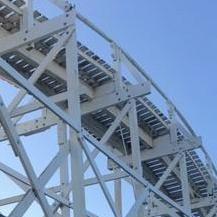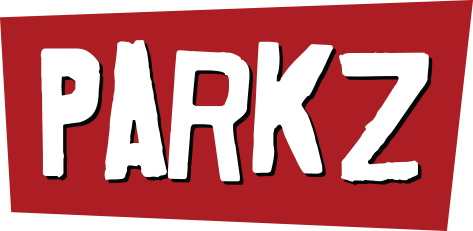-
Posts
640 -
Joined
-
Last visited
-
Days Won
17
Everything posted by TBoy
-
Dreamworld have definitely put much more love and care into the whole land than MW with Wizard of Oz - every part just looks spectacular. The details placed within each part look fantastic, even a non E-ticket like this looks amazing, and will only get better thanks to weathering and the growing greenery. Good job to Greg Yong and his team for making Rivertown so great, I can't wait to see what is next. Hopefully some enhancements are made eventually, such as retheming Motocoaster into the land and redoing the store's facade to match.
-

Wizard of Oz - Movie World Arkham Asylum Replacement
TBoy replied to Park Addict 93's topic in Theme Park Discussion
Looking at the images, the courtyard seems underwhelming. It feels a bit too flat, and I don't like the white box in the middle of the land. I haven't seen the inside of the land yet so I hope that will be better. -
Glad to see they worked fast to get it open, who knew Rivertown would have a soft open before WoO? There are a few more bits and pieces but I am sure they can get them in before Boxing Day. The only thing I don't like about the area is how the Rivertown store is just brown instead of the temple like features of the land, hopefully they can eventually fix it up if they retheme Motocoaster.
- 1,458 replies
-
- 5
-

-

-
- vekoma
- dreamworld
-
(and 2 more)
Tagged with:
-

Wizard of Oz - Movie World Arkham Asylum Replacement
TBoy replied to Park Addict 93's topic in Theme Park Discussion
I guess this means the land will open immediately on the opening date with no announcement from the park beforehand like Flash. Interesting to see... -
😍 This is beautiful, the theming looks amazing. Can't wait to see pictures of the rest of the land.
- 1,458 replies
-
- vekoma
- dreamworld
-
(and 2 more)
Tagged with:
-

Has Coast Entertainment given up on Whitewater world?
TBoy replied to New display name's topic in Theme Park Discussion
It is very obvious that Dreamworld is the priority, with WWW not getting any investments for years while Dreamworld gets Steel Taipan, K&B Dreamland, Rivertown and King Claw, as well as being hidden and it closing on weekdays. Hopefully after King Claw they give it some love instead of giving all the money to the main park. "I heard something that apparently if you invest in something, more people will come"- 118 replies
-
- coast entertainment
- dreamworld
-
(and 1 more)
Tagged with:
-
The point I am trying to make is that they make it cohesive down to the sightlines. The area here fits in with the theming of both Voodoo and Volcano Bay, making it a smooth transition. Whilst at Movie World you will be able to see almost all the coasters from WoO, I cannot remember seeing Superman fly a train of passengers in Wizard of Oz for example. But you are right, Movie World doesn’t have a lot of land especially compared to even the other parks on the coast.
-
I love it too, I will be heading there in summer so will be cool to check out. I always love how Funfields puts special effort into theming, it could be the family owned nature that helps put in the special detail rather than corporate ownership who only care about making a profit. The way it fits into both Voodoo and Volcano Bay is one thing I love as well, they put in the effort to make it cohesive (cough cough Superman next to Wizard of Oz)
-
Yes we are doing that, and also arriving early and leaving late to get the most out of the day. We aren’t just doing parks, I am going with non-thoosies who also want to do other things.
- 40 replies
-
- tokyo
- tokyo disney
- (and 8 more)
-
Hello everyone: A few months ago I told you about how we want to go to Japan in 2026 and asked you what we should do. We are moving this trip up to late 2025, and are currently planning to do: Fly from Melbourne to Tokyo, spend 3-4 days in Tokyo including Tokyo Disneyland/Tokyo DisneySea (1 day each) as well as a seperate day for other activities Spend a few days travelling down to Osaka, stopping at Mount Fuji and Ghibli Park Head to Osaka and spend 2-3 days there, 1 of them at Universal Head down to Nara, then go back to Osaka and fly out to Melbourne We want to spend around 10-14 days there (likely including travelling) and we would want some more tips on what to do, especially on the way from Tokyo to Osaka.
- 40 replies
-
- tokyo
- tokyo disney
- (and 8 more)
-

Wizard of Oz - Movie World Arkham Asylum Replacement
TBoy replied to Park Addict 93's topic in Theme Park Discussion
I have a feeling both will close at the same time so Flash won’t be interrupted -
It looks alright for an arcade, only thing I would say is they should've had a door facing Kids WB but otherwise an alright job, nothing too bad
-

King Claw - Larger Replacement Intamin Gyro Swing for Dreamworld
TBoy replied to Tricoart's topic in Theme Park Discussion
I like the placement of the ride being right in front of you when you walk down from Main Street, will be a good photo op. The theming is noice too, unfortunately the support beams don’t seem to have the hands this time round unfortunately. -

King Claw - Larger Replacement Intamin Gyro Swing for Dreamworld
TBoy replied to Tricoart's topic in Theme Park Discussion
They have done a good job with the marketing, the jabs at Village are funny and the former Ardent, hopefully they can keep it up It may not be something big like Jungle Rush but at least its a good replacement for the former Claw -

King Claw - Larger Replacement Intamin Gyro Swing for Dreamworld
TBoy replied to Tricoart's topic in Theme Park Discussion
Where are they going to get the space to put it if it is 2 times larger? It will require a much larger footprint, wouldn’t something have to go? -

Gumbya World Special announcement
TBoy replied to Themepark Enthusist's topic in Theme Park Discussion
Interesting. I can see it being waterslides given they did rides in 2022 and haven't added any in 5 years, I know the water area is very popular so they would want more to space out the crowds. Going to be an exciting day for Gumbuya's new attraction and King Claw tomorrow. I have to agree, they are in two different locations with very minimal overlap in attendance. Most of Australia knows what Dreamworld is and they get visitors from different state, while mostly Victorians would visit Gumbuya. -

Wizard of Oz - Movie World Arkham Asylum Replacement
TBoy replied to Park Addict 93's topic in Theme Park Discussion
I love how you can see all the coasters (excl. Scooby and Road Runner) from that angle, shame it likely wont be open to visitors -

Could Big Brother return to Dreamworld?
TBoy replied to zacsta_1997's topic in Theme Park Discussion
From what I am hearing apparently the show is being produced at Docklands in Melbourne. Most likely in a warehouse or something? I know the Costco near The District is closing soon, maybe there? -
I am surprised they have that small bit of fence there from ABC Kids World, you can see it near the end of the video
- 1,458 replies
-
- vekoma
- dreamworld
-
(and 2 more)
Tagged with:
-

Could Big Brother return to Dreamworld?
TBoy replied to zacsta_1997's topic in Theme Park Discussion
The problem with that is the studios will likely be full, from my understanding the studios would likely be filled up in advance as some films use all the stages. They would have to build a new one exclusively for Big Brother, which would cost a lot. -

King Claw - Larger Replacement Intamin Gyro Swing for Dreamworld
TBoy replied to Tricoart's topic in Theme Park Discussion
considering we got Kenny's dreamland and Rivertown at the same time, I wouldn't put it out of question. Possibly a replacement for Claw and a new coaster possibly? -

King Claw - Larger Replacement Intamin Gyro Swing for Dreamworld
TBoy replied to Tricoart's topic in Theme Park Discussion
Looks to be a new Gyro Model replacing Claw, I assume Dreamworld are the first to buy it and Intamin will put it on offer to others. -
Another bot is here unfortunately above me, hopefully mods can sort it out
-
For some reason it really sticks out to me, you have this immersive land with the Leviathan queue and the statues/gardens and then you have that white shed. Surely they could've painted it green or dark blue so it sticks out less? As I said, at least Dreamworld are making the building green that mixes in with the trees around the show building, they could've done a Village where the white shed sticks out like a sore thumb.
- 1,458 replies
-
- 1
-

-
- vekoma
- dreamworld
-
(and 2 more)
Tagged with:




